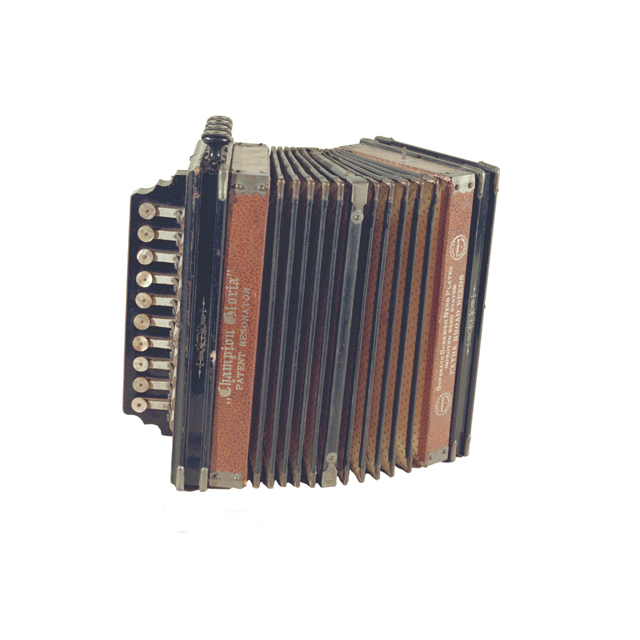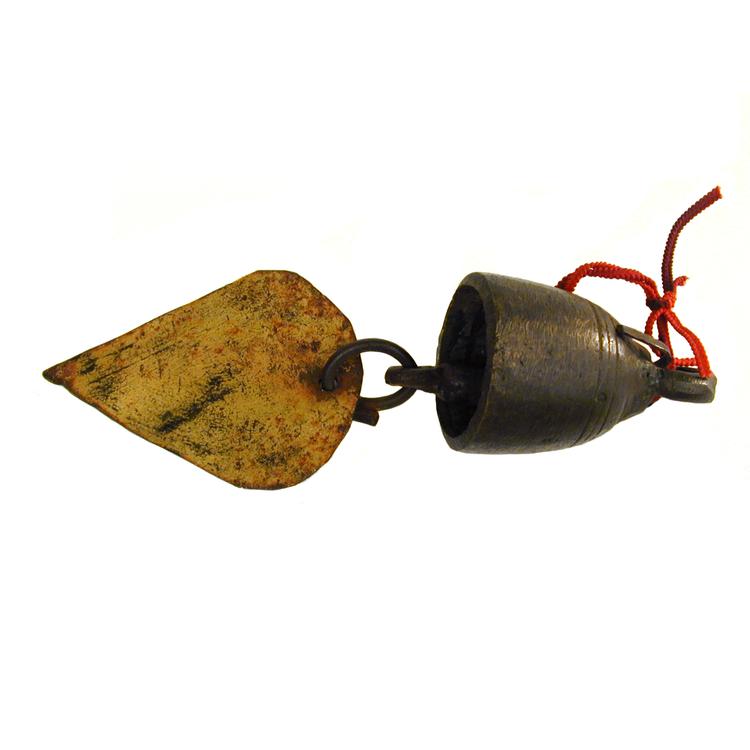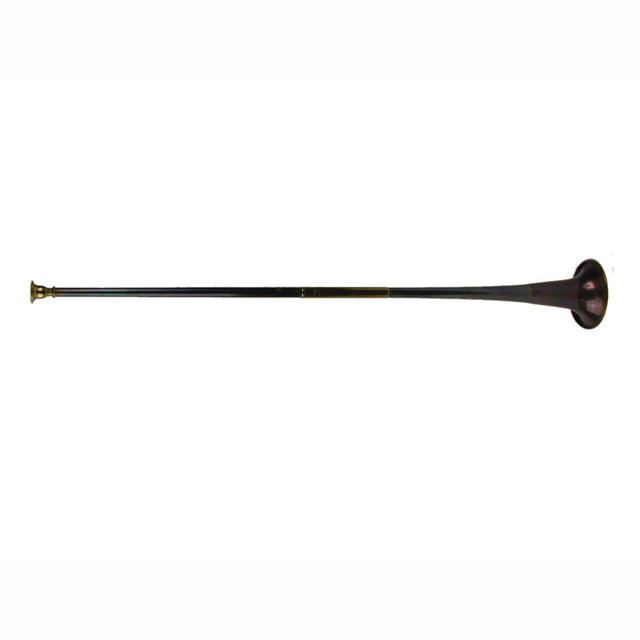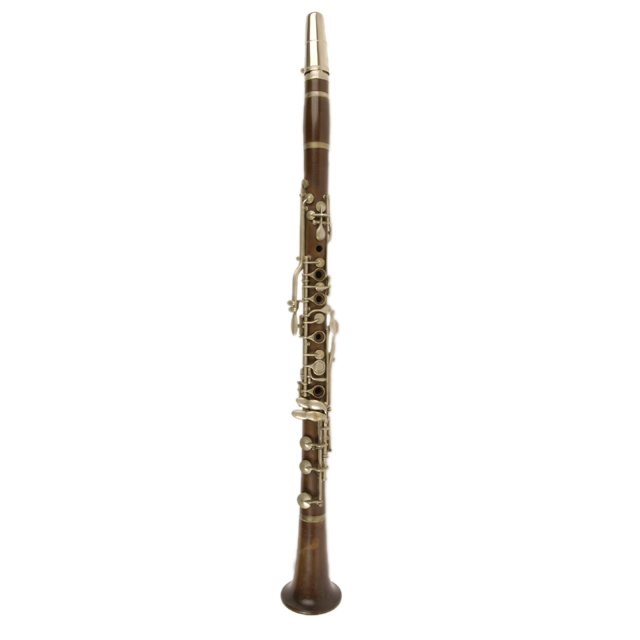
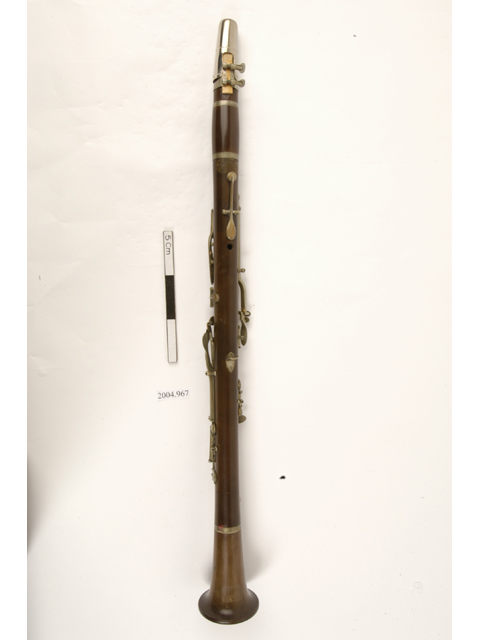
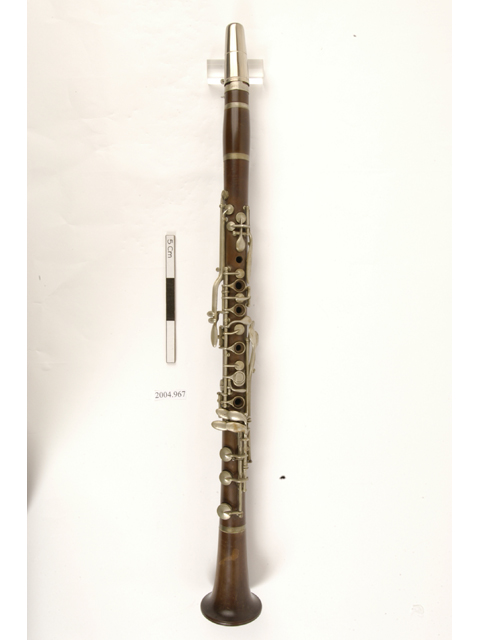
Clarinet in B flat. Ebonite body. Nickel silver-plated ferrules, keywork, mouthpiece cap and ligature. Keys are pillar mounted with leather pads. Cork lapped tenons, one of which is also lapped with string. Clinton-Boehm system fingering. Low A key has complete cover instead of a ring key. Reed and ligature present. Ligature has two butterfly screws for securing reed. Mouthpiece is stamped with two decorative rings and the inscription: MADE IN ENGLAND; Barrel and bell stamped: BOOSEY & Co./LONDON; Body joint stamped: BOOSEY & Co./MAKERS/LONDON/16314; The letters LP within a circular frame have been scratched into the body beneath this inscription. A paper label attached to the body joint has written in D.J. Blaikley's hand: CLARINET/WAS THE PROPERTY/OF & USED BY/THE LATE/A.G. CLINTON
The clarinet was the most important woodwind instrument made by Boosey & Hawkes. During the early 20th century, Boosey & Co. Works Manager David James Blaikley collaborated with several London orchestral players to develop new clarinet models. These instruments were designed with George Arthur Clinton, clarinettist in the Crystal Palace Orchestra and Philharmonic Society, and Royal Academy of Music professor. This particular instrument was owned and played by Clinton. It is made from ebonite, a product of the vulcanisation of rubber with sulphur. Ebonite was less prone than wood to cracking or warping when exposed to humidity and temperature changes.



